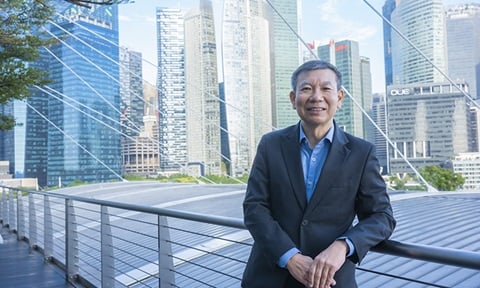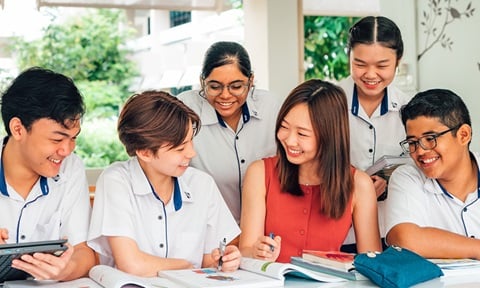Commentary: Is DSA becoming almost as important as the PSLE in the transition from primary to secondary school?
SINGAPORE: As the Direct School Admission (DSA) selection process gets underway this year, it marks a significant milestone - 20 years since the inaugural exercise in 2004.
The DSA scheme allows students to use their talents in areas such as sports, music and leadership, among others, to secure admission into secondary schools or junior colleges (JCs) before they even sit for the Primary School Leaving Examination (PSLE) or O-Level examinations.
This alternative pathway has gained popularity, especially among students who may not excel academically, as it offers them a chance to get into their desired schools.
However, the DSA scheme has not been without controversy. Critics argue that the DSA scheme benefits children from wealthier households who can afford private coaching and preparatory classes.
It is also highly competitive. Last year, 38,088 Primary 6 students sat for the PSLE. Nearly 40 per cent of the cohort, or 14,500 students, submitted a record 38,000 DSA applications. Of those, only about one-third, or 4,400 students (about 11 per cent of the cohort), succeeded in their applications.
Why is the DSA programme so popular? Is it becoming almost as important as the PSLE in the transition from primary to secondary school?
GENESIS OF DSA SCHEME
The genesis of the DSA scheme can be traced back to early calls in the 1980s and 1990s for greater diversity and flexibility in Singapore’s education system.
A group of secondary school and JC principals who went on a study trip to the United Kingdom and United States issued a report in 1987 recommending some latitude be accorded to allow secondary schools and JCs to admit students based on “special aptitudes or talents”, while retaining academic merit as the main admission criterion.
Two subsequent reports commissioned by the Ministry of Education (MOE) in the late 1990s echoed these sentiments, stressing the need to move away from an over-emphasis on academic performance to a more holistic approach to education.
When it was first rolled out in 2004, the DSA exercise involved seven secondary schools that had just begun introducing various integrated programmes (IP). Over the years, the number has grown, with all the JCs and 141 of the 148 secondary schools involved this year. They are allowed to admit up to 20 per cent of each cohort through DSA.
Three specialised independent schools - the School of Science and Technology, the School of the Arts and the National University of Singapore High School of Mathematics and Science - are allowed to admit all of their Secondary 1 places through the scheme.
IP schools, which offer a six-year course for academically strong students that bypasses the O-Level exams, generally admit about 30 to 35 per cent of their Secondary 1 intake via DSA.
CONCERNS ABOUT EQUITY AND FAIRNESS
Even as the DSA has become a fixture in the education landscape, concerns about equity and fairness persist.
Member of Parliament for Jalan Besar GRC Denise Phua noted in 2016 that it was an “open secret” that children from more affluent backgrounds stand a higher chance of benefitting from the DSA programme since they can be nurtured from young in the arts or sports.
Tuition centres specialising in DSA prep start as early as Primary 4, offering interview workshops and portfolio building. Private sports schools also offer curated DSA prep camps. There are books advising parents on strategising for DSA, for example, by enrolling their children early in activities that prestigious schools value.
Schools, too, have to resist the temptation to recruit entire teams through the DSA exercise, which can limit opportunities for non-DSA students, particularly those without any prior achievements.
The MOE has acknowledged the existence of inequities, and implemented measures to address them.
In 2018, the then Second Minister for Education Indranee Rajah admitted that “those who come from disadvantaged backgrounds may not be as well-informed of some of the choices and opportunities available”.
In 2020, then-Education Minister Ong Ye Kung told parliament that primary schools would increase their efforts to encourage students with ability and potential, “especially those from less advantaged family backgrounds”, to try the DSA route.
One such method of reaching out to more students is the Junior Sports Academy, a collaboration between the MOE and the National Youth Sports Institute. The Academy provides selected primary four and five students with up to two years of non-fee-paying coaching in a variety of sports.
NOT A PATHWAY THAT SUITS EVERY STUDENT
Looking forward, even as Singapore continues to refine its education policies, students and parents need to give careful thought as to whether the DSA scheme works for them.
Students admitted via DSA must commit to remain in a particular school and take part in activities related to the talent area chosen, while at the same time keeping up with the academic pace.
If the child is academically not on par with their chosen school, they may struggle to keep up.
The MOE website cautions that “the DSA-Sec is not a pathway that suits every student”.
Given the importance of every student’s personal growth and development, consider your child’s strengths and interests. The overall well-being of a child should lie at the heart of any decision-making process.
Jason Tan is Associate Professor in Policy, Curriculum and Leadership at the National Institute of Education.
Read the original article here.
Source: Channel NewsAsia © Mediacorp Pte Ltd. All rights reserved.




.tmb-listing.jpg?Culture=en&sfvrsn=13b00373_1)


